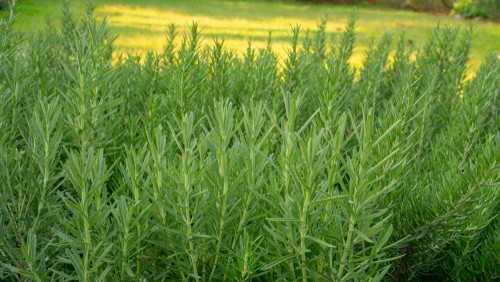Last updated on March 23rd, 2022
Our site is reader supported, this means we may earn a small commission from Amazon and other affiliates when you buy through links on our site.
Lavender shrubs will produce the aromatic blossoms that everybody enjoys, the quintessence of relaxation and spas everywhere. If you tend to your Lavender shrubs properly they can live for up to 20 years. The problem is, like most of us, the effects of ageing take their toll and after about seven years the Lavender starts to look woody, producing fewer flowers than it once did and becoming overrun with bare stems, usually towards the base.
But this doesn’t mean everything’s over. By pruning your Lavender plant at this point in its life you can restore it to its original beauty although it does take some time and patience.
It’s also not 100% successful but it’s well worth a try, it’s usually about 50% successful with a very woody plant with just green growth at the top, you can always take cuttings before you prune so you have spare plants.
Learn how to take cuttings from Lavender in this article before hard pruning
The Signs of Woody Lavender
Once you notice that your Lavender is displaying these signs of ageing, it’s time to initiate your recovery plan. To do this you simply have to prune your Lavender. Pruning your Lavender will rejuvenate the plant and promote new growth lower down. Prior to pruning, sterilise any tools you are going to use with Jayes fluid or a bleach and water mixture.
If you are pruning multiple Lavender plants, sterilise your tools in between each plant to prevent the spread of any diseases or infections. Just because you can’t see disease on your plants doesn’t mean that it isn’t there.
Secondly, make sure that the tools you use are as sharp as possible. The reason for this is, is that every cut you make when pruning stems will leave your plant exposed so you want nice clean cuts. The cuts on your plant leave the Lavender susceptible to disease. If you have dull blades and you hack away at a single branch leaving multiple cuts, you leave your Lavender susceptible to multiple points of entry for infection. The sharper the tools, the easier the process will be.
When to Prune a Woody Lavender
Only prune your Lavender in the spring after the risk of frost is over or at least, the worst frosts early on. If you are not 100% certain that the frost is over, which is usually May in most parts of the UK, do not prune. The frost will kill any new plant growth that pruning encourages, so a delayed and unexpected cold snap can damage any progress that you’ve made.

How to Prune a Woody Lavender
With woody Lavender, the trick is to do the work over a few seasons which is why you need to be patient. Cut back your branches by a third, always making sure there are still green leaves on the plant when you are finished. Then come back the following year and cut back another third. It’s quite common for this process to take a few seasons to complete.
The reason for this is that pruning a little bit at a time gives your Lavender the opportunity to recover and regenerate new growth towards the base. If you go at it and do everything all at once it might be such a severe shock that your plant doesn’t recover the way you want it to.
When you are ready to start pruning, remove only the branches that are truly dead first. Brown bare branches that go all the way back to the base of your plant are truly dead. Prune in the autumn again to add shape and structure to your plant, remove any weeds, and add some slow-release fertiliser or growmore to give it some extra help before the winter sets in. It may be worth covering the Lavender in fleece to protect any new growth over winter.
You can learn more about protecting your plants in winter by clicking here
Prevention
Like all impacts of ageing, the key to success is prevention. If you have a young, new Lavender plant, making sure it has access to good drainage and very minimal fertiliser can help you prevent it from getting woody with age. You should only plant your Lavender in well-drained soil and prune yearly to keep them looking their best with plenty of fresh green growth. They should be fertilised only sparingly the first year after planting and beyond that not really fertilised at all. To help maintain shape and size, you can prune it lightly to keep it around every year.
Learn more about how to prune Lavender in this guide here
Overall, with a little bit of extra pruning, you can restore your plant to its former glory, and keep it lasting for years to come. If at all possible, implement preventative measures for newly planted Lavender, rectify these issues if they are pre-existing amongst older Lavender, and then utilise pruning to bring everything back.
Have you ever considered growing Lavender in pots? Check out our guide on how to do just that


